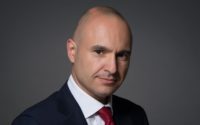Middle East Economic Growth To Accelerate By Second Half Of 2021 As Restrictions Ease
A new report, Economic Update: Middle East Q1 2021, compiled by Oxford Economics and commissioned by ICAEW, predicts the rollout of coronavirus vaccines should allow a return to relative normality in the Middle East in the second half of 2021, while much of the region’s economies will benefit from higher commodity prices and stronger external demand.
According to the Economic Update report, the Middle East’s GDP forecast for this year stands at 2.5%, similar to the average pace from 2010 to 2019 (2.6%). This follows the unprecedented decline seen in 2020, estimated to be 5.2%.
The report observed that 2021 has got off to a slow start for the global economy due to containment measures aimed at bringing COVID-19 numbers under control. Likewise, countries in the Middle East have had to clamp down, imposing restrictions on travel and their domestic economies to curb the spread of the virus.
The vaccine rollout has been uneven but has progressed particularly well in the UAE and Bahrain, where a relatively large percentage of the population has been vaccinated compared to neighbouring countries and global peers. Overall, according to ICAEW, GCC GDP will grow by 1.4% in 2021, after an estimated 5.4% contraction in 2020.
Expectations of strengthening activity and rising demand have lifted sentiment, pushing oil prices up to US$66 per barrel (pb) in late February (up from a low point of $9pb in April 2020). The oil price outlook has also been supported by ongoing supply restraint from OPEC+ producers. The group plans to increase output only modestly in the months ahead, to sustain a reduction in inventory levels, with Saudi Arabia maintaining an additional voluntary production cut of 1m barrels per day through April.
While the current oil price level is still much lower than the GCC has been used to, it provides a reprieve to budgets and eases the pressure for further fiscal consolidation. However, some governments such as Oman and Saudi Arabia will cut expenditure against the backdrop of continued low oil revenue.
Although deficit financing needs will decline in 2021, most countries will continue to borrow in international debt markets to fund diversification programmes or refinance maturing debt at low rates.
Michael Armstrong, FCA and ICAEW Regional Director for the Middle East, Africa and South Asia (MEASA), said: “While COVID-19 vaccine rollouts are underway, Middle Eastern governments must continue to develop sectors and industries that generate net value for the economy. Increasing non-oil revenues is a challenging task in these times so innovation will be vital to the region’s economic recovery.”
Scott Livermore, ICAEW Economic Advisor and Chief Economist at Oxford Economics, said: “In the first quarter of 2020, the COVID-19 pandemic brought Middle East economies to a temporary standstill. Today, we are encouraged by the steps regional governments are undergoing to bring back normalcy. However, the continued uncertainty in the global market puts more pressure on the oil-reliant economies to increase their non-oil revenues. Governments must remain proactive and continue to support their economies with pro-growth initiatives to bounce back quickly.”
The rest of the region also faces many challenges, including oil production cuts, periodic virus-related lockdowns and, in Iran’s case, US sanctions. A potential return to the Joint
Comprehensive Plan of Action (JCPOA) under US president Biden and the lifting of sanctions could provide a meaningful boost to Iran’s oil economy and budget and help cool double-digit inflation.
In Lebanon, the stalled cabinet formation and worrying health situation continue to take a toll on the economy amid the ongoing financial crisis. With no reforms to spur a recovery and with demand persistently depressed, the report predicts that Lebanese GDP will fall by 5.3% in 2021, following an estimated 25% plunge last year.
Iraq, with the least diversified economy in the Middle East region, has again been driven into the IMF’s arms to help meet financing needs. A drop in foreign exchange reserves triggered a 16% devaluation of the Iraqi dinar in December, the first such move since 2003.








 Email: info@cyber-gear.com
Email: info@cyber-gear.com